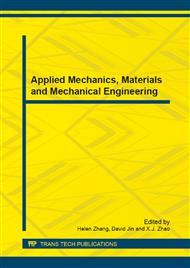p.323
p.328
p.332
p.337
p.341
p.345
p.350
p.356
p.360
Anti-Collision Risk Assessment Method Based on Relevance Vector Machine
Abstract:
In order to improve the safety level of aircraft anti-collision, an anti-collision risk assessment methods based on Relevance Vector Machine (RVM) is proposed. First, RVM learning under Bayesian framework is introduced as well as its basic principle and modeling process, and then on the basis of system point of view an anti-collision risk assessment index system is established, finally, on this basis, RVM assessment model for aircraft anti-collision risk is constructed. It can adaptively adjust the weights of influence factors without analyzing the relationship between various factors in the system. Examples show that, for anti-collision risk assessment, RVM has a novel structure and convenient application, and the result can reflect the actual safety situation.
Info:
Periodical:
Pages:
341-344
Citation:
Online since:
August 2013
Authors:
Keywords:
Price:
Сopyright:
© 2013 Trans Tech Publications Ltd. All Rights Reserved
Share:
Citation:


